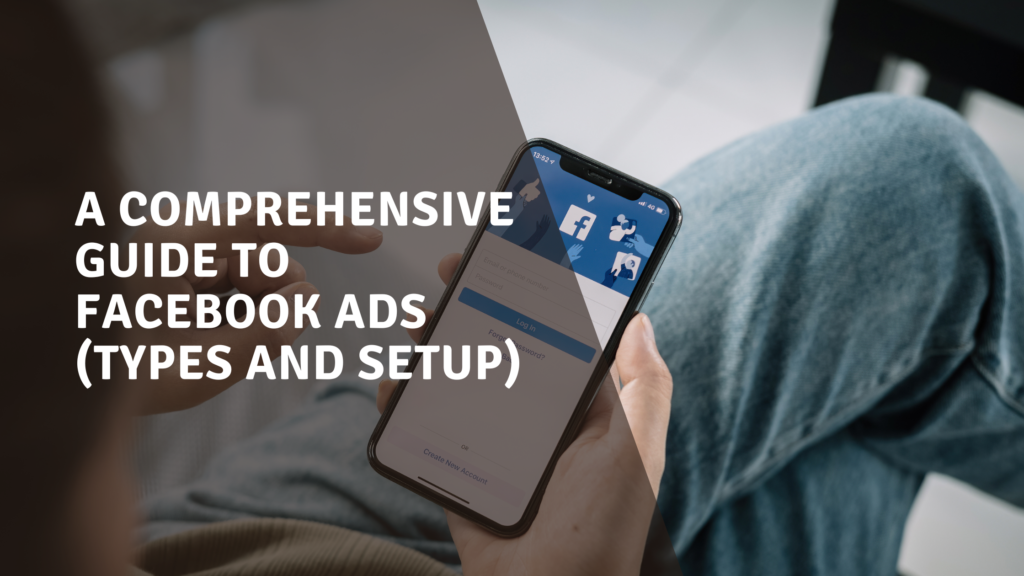
Despite several new kids on the social media block, Facebook continues to gain users and provides a popular method of online advertising for businesses around the world to market their products and services. As such, Facebook advertising remains a key skill for marketers looking to cater to their clients’ digital marketing needs. Understanding the various elements of Facebook advertising can help you create ad campaigns for your clients that deliver the results that matter most to them.
In this article, we define Facebook ads, discuss the difference between Facebook ads manager and business manager, introduce the types of ads and provide detailed instructions on how to create a Facebook ad campaign from scratch.
An introduction to Facebook ads
Facebook ads are promotional posts, essentially paid adverts, that businesses can use to showcase their products or services. They typically have more elements than a standard FB post and include a call to action specific to the campaign objective. You can choose to have your clients’ Facebook ad campaigns shown in a variety of places, for example, Facebook, Messenger, Instagram and WhatsApp and in a range of formats, for example, image, video or slideshow.
A key feature of Facebook advertising is the ability to target users based on specifics, such as demographics, location and interests. It also provides the opportunity to re-target users, for example, people who’ve previously visited your customers’ websites or clicked on one of their ads.
Facebook Ads Manager vs. Facebook Business Manager
Understanding the difference between Ads Manager and Business manager can help you know which to deploy and when. Below, you can explore the definition of each:
Ads Manager
Facebook’s Ads Manager is essentially the starting point for the creation of FB ads. It’s the tool that allows you to design and edit sponsored campaigns for a Facebook account. Its key features also allow you to select devices and positioning for ads, store lists of contacts for targeting custom audiences, discover relative target audiences and deploy A/B testing for maximized ad efficiency
It can help you monitor campaign performance based on various metrics, for example, reach, click-through rates and impressions. Note, while Ads manager provides great insights within Facebook-owned apps, it cannot track users outside of these. Google Analytics is a great option for tracking the performance of your campaigns with holistic accuracy.
Business Manager
You can consider Facebook Business Manager a centralized hub for overseeing all of your Facebook advertising efforts. For digital marketers who manage several clients’ Facebook advertising, using this tool can be an excellent idea. It allows you to connect numerous client Facebook pages and ad accounts to your Business Manager account without the requirement to request administrator access from your personal FB account. You can access Ads Manager directly from your Business Manager account, too.
Business Manager not only gives you the ability to keep your business and personal FB endeavors separate and manage multiple Facebook pages and their advertising campaigns in one place. It typically also comes with greater support from Facebook should you encounter a technical issue.
Facebook ad formats
There is a range of FB ad options and formats for you to choose from to suit a variety of campaign objectives. You can explore some of them below:
Image ads: These are the simplest of the ad formats FB has on offer, allowing you to promote a product or service through a single image, for example, an illustration, design or photograph. While the simplicity of this ad type can pose limitations, image ads can be well-suited to campaigns that can communicate their message through powerful visuals.
Video ads: These ads allow you to promote a business through a single video of varying lengths, though shorter videos seem to be the most engaging. While the creation of video ads might be less time and cost-effective than other types, they can be a powerful choice for demonstrating products and highlighting moving components.
Slideshow ads: This ad format provides the perfect opportunity to grab users’ attention through movement and sound but without the amount of effort and data a video ad requires. Slideshow ads can string together up to 10 individual photos or videos and can be a choice for great for highlighting processes or similar products.
Carousel ads: These ads allow users to swipe through a range of content, each of which has its own caption and link to a unique landing page. Carousel ads can be a great option for campaigns that require storytelling or for products or processes that can benefit from being grouped into sections.
Collection ads: Similar to carousel ads, these ads can be great for larger companies to showcase multiple products and provide users with a window-shopping-like experience. They’re customizable, full-screen and allow users to make a purchase directly from the ad.
Story ads: This ad type offers an immersive user experience through full-screen displays that appear in between the stories users view on various platforms. While these types of ads usually require specially formatted content, they can be great for building brand awareness, as they allow for a lot of freedom of expression and the use of engaging effects.
Instant experience ads: These ads provide users with the opportunity to interact with your content by swiping through images, tilting their screens for different angles, and zooming in and out. Instant experience ads are available on mobile only and can be complex to set up, but they’re quick to load and highly engaging.
FB advertising costs
The costs for placing FB ads can range significantly depending on multiple factors. Below, you can find a few points surrounding how Facebook advertising costs work so you can help your clients set an ad budget:
It can be more expensive to advertise to narrow audiences than to broad ones.
Costs for ads can change depending on where they’re shown, for example, on Facebook or Instagram.
How long a Facebook ad runs can affect the final cost.
Ads for highly competitive industries, expensive products, and valuable leads can cost more than others.
It can be more expensive to run Facebook ads during specific times of day, seasons and holiday periods.
Ad costs typically range considerably between different geographical locations.
How to create a Facebook ad campaign
Before creating a Facebook ad campaign, you need to set up an ad account for the specific Facebook page. Once this is done, you can start working on a Facebook ad, which you can find step-by-step instructions for below:
1. Define the objective
When creating ads, Facebook provides a selection of advertising objectives to choose from. It’s important you specify an objective that aligns with the business’s Facebook advertising strategy and overall goals. It’s important to note that sales-orientated objectives attract a pay-per-action cost, whereas exposure-orientated objectives attract a pay-per-impression cost. Below you can find the various objectives, which essentially drive the action you aim for users to take:
Reach
Brand awareness
Traffic
Engagement
Video views
App installs
Messages
Lead generation
Conversions
Store traffic
Catalog sales
2. Specify the target audience
The exact audience you specify for your Facebook ads campaign and whether you take a narrow or broad approach to reach can depend on the business’s target market and ad objectives. There are several ways you can specify the target audience for Facebook campaigns.
You can set parameters using Facebook’s in-built targeting, which includes a broad range of options, from age to gender, education, interests and life events to behaviors, financials and more. You can also choose to target a custom audience from a contact list you upload, which might comprise contacts from the business’s CRM, previous visitors to their website, or people who have downloaded their app.
3. Set the budget and schedule
There are several important things to consider at this stage to control your ad spend. Firstly, you need to choose a daily or lifetime budget. A daily budget specifies how much your client is willing to spend each day, whereas a lifetime budget specifies how much they’re happy to spend over the entire period the ad is live. Next, you can choose your ad schedule, for instance, whether you want to run the ad straight away and on an ongoing basis or want it to start and end on particular days.
Advanced budgeting options allow you to opt to bid manually for actions, such as clicks or impressions, should you not wish to use Facebook’s recommended bids which are based on the behavior of other Facebook advertisers. Doing this can give you ultimate control over how much your clients pay for user actions generated by their campaigns. You can also choose to have the ad shown at a standard or accelerated rate, though to select a sped-up delivery you’ll need to adopt manual bidding.
4. Select the placements
Next, you can choose where you want the ad to be shown. The simple method for doing this is to select Advantage+ placements which automatically places the ad based on where it’s expected to generate the best results. Choosing Manual placements can give you more control over where people see the ad, allowing you to choose from options, such as:
Platforms: Facebook, Instagram, Messenger, Audience Network
Placements: Newsfeeds, messages, stories, reels, apps, websites, search, etc
Devices: mobile and/or desktop
Operating systems: iOS, Android, feature phones, or all devices.
It’s important to note that the options you see displayed here may depend on the campaign objective you chose initially.
5. Create and publish the ad
Finally, it’s time for the ad creative. This step involves choosing the format and adding the copy and media elements. It’s important to note that the formats Facebook makes available for you to select at this stage can also depend on the ad objective you previously chose.
The recommended guidelines for various Facebook ads, in terms of text allowances and dimensions for photos and videos, can frequently change. So, it’s important to check the latest specs to create ads that adhere to Facebook’s specific design criteria. Once you’ve added all the details for your ad, you can use the preview tool to ensure it looks as you intended. If so, the next step is to publish it!
6. Track the ad’s performance
Once you’ve published your client’s ad and it’s officially up and running, it’s important to monitor it to ensure it’s getting the intended results. Don’t worry if it’s not – that just gives you the perfect opportunity to optimize. You can find performance insights on the dashboard within the account’s Ad Manager. The default settings should be enough to give you great oversight of the ad’s performance, but you can also get really specific with the insights you want to see by applying a few filter options.
While the ad’s KPIs will depend on its overall objective, some good metrics to monitor when tracking the performance of your clients’ ads are:
Results: a value representing the number of times the ad has achieved its goal, for example, getting someone to like the post or click on a link
Cost per result: how much it cost to generate each result
Reach: how many users see the ad
Impressions: how many times the ad is seen (including by the same person)
Amount spent: this refers to how much has been spent on the ad in total so far
Your technical SEM partner
Do you want to leverage your clients’ ads for increased traffic, higher ROI, better quality leads, maximized revenue, or enhanced conversion rates? Consider WhiteOwl the tactical, technical and analytical partner that can help elevate your Facebook ads services. Contact us to see how we can assist you.




